As told to Rachel Grozanick
Venezuela is at war with itself. The country has been going through an endless cycle of protests: people demand change, the government makes some token gesture or promise and the riots quiet down, then an opposition leader is arrested or the the government does something the people disagree with and the protests erupt again. It’s an ebb and flow.
I spent three weeks reporting in Venezuela with my fellow Dutch journalist, Michel Spekkers. His strong urge to report on a country in crisis soon became by own. We started in Maracay, where Michel had lived for a year and a half, then travelled east along the coast to Caracas. From there, we followed the coastline much of the way, until we turned inland to cross the border into Colombia to fly out of Bogotá.
Because of the turmoil in the government, the high crime rate, the widespread corruption, and the economy — destabilized by steep inflation of Venezuela’s currency, the Bolivar — Venezuela is a dangerous place. Being a gringo carrying a camera worth a year’s salary in Venezuela didn’t help. You fear every time you take out your camera that you’ll be killed or robbed. You can’t wear any jewelry or even talk on your phone in public. We always traveled with security, a driver and Cheo, our translator who often got us access to people we wanted to interview. It took me a while to adjust to being in constant danger.
For Venezuelans, though, that’s their way of life now. By some reports, Venezuela’s murder rate is one of the highest in the world, indicative of a violent crime epidemic in the country. One reason for this is that these crimes can happen with impunity — fewer than ten homicides cases of every 100 even have a detainee. Venezuelans live every day with the constant and real threat of being robbed, taken hostage or killed. At one point, I was watching a young man across the street make a phone call. Two people wearing black helmets passed by on a motorcycle. A gun was calmly but swiftly pointed at the man. He ran. They sped away.

April 16, 2017 Maracay, Venezuela (Photo by Joris van Gennip/GroundTruth)
We started out in Maracay, where a patriotic mural in one of the suburbs memorializes former president Hugo Chavez. Many Venezuelans still support Chavez as though he were still alive. He is still considered by many to be the “savior” of Venezuela.
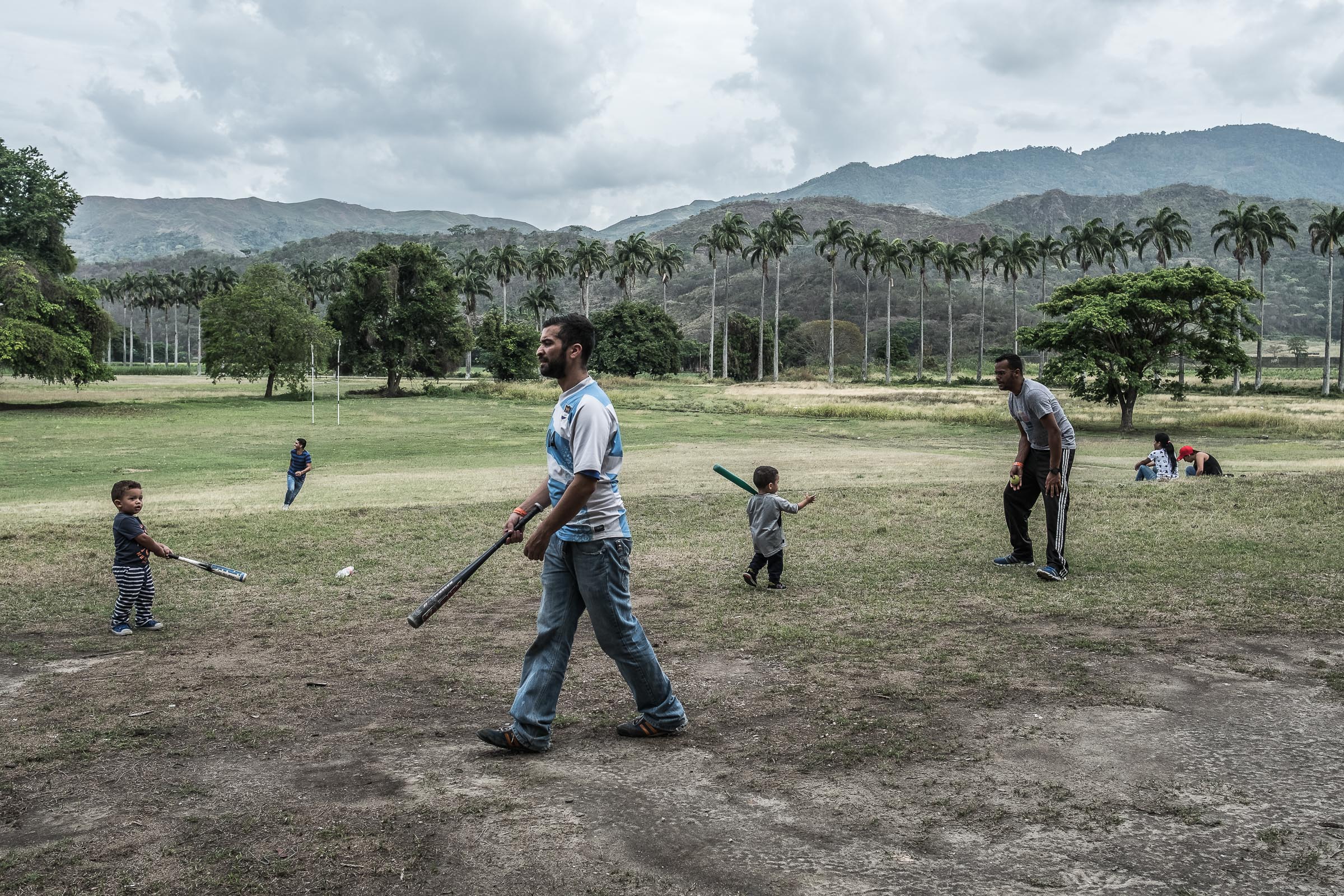
April 16, 2017 Victoria, Venezuela (Photo by Joris van Gennip/GroundTruth)
Hacienda Santa Teresa, a rum manufacturer near Victoria, is surrounded by nature and provides a bit of stability to families who want to get away from the violence surrounding them in their daily lives. They can let their guard down a little here and play baseball.
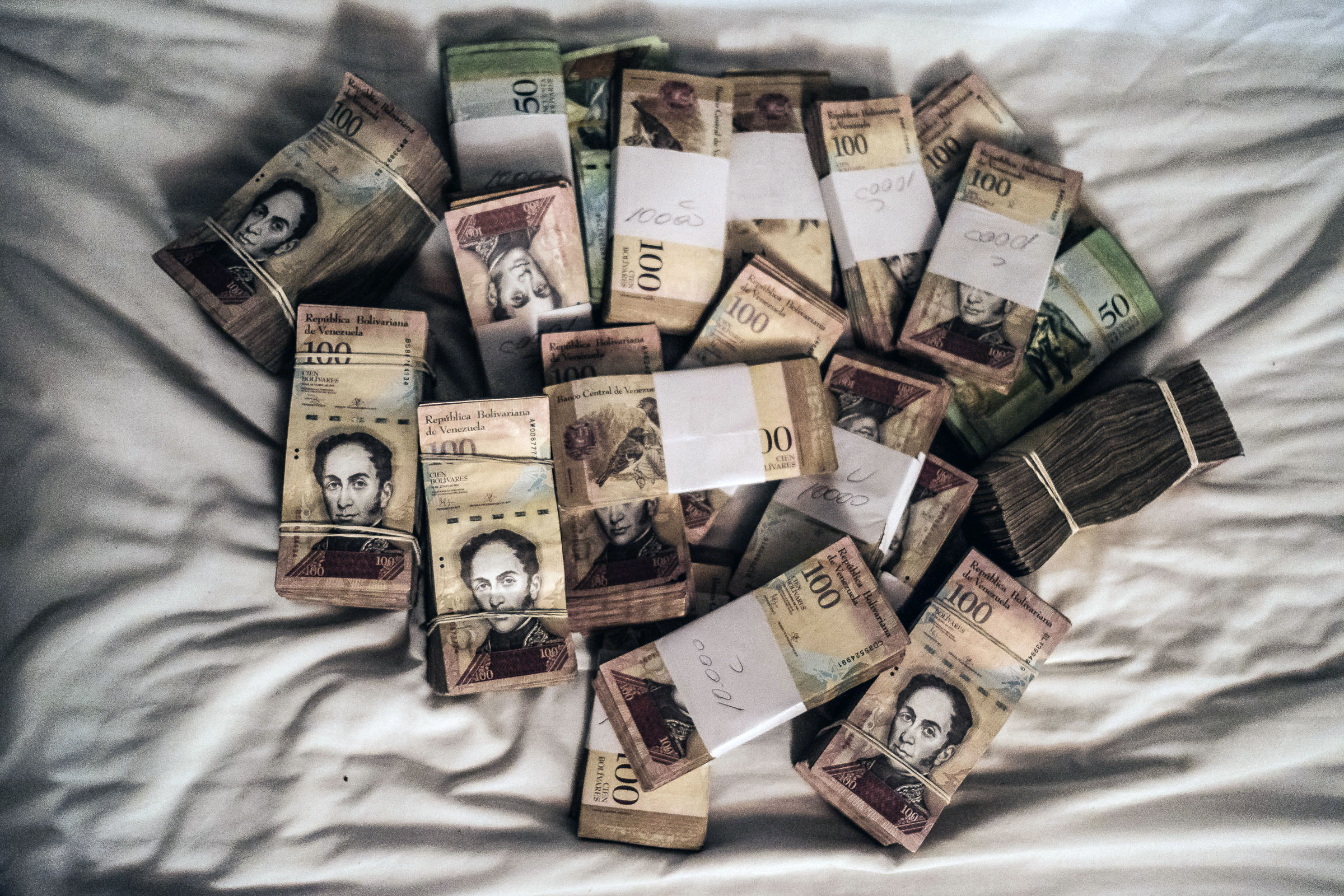
April 17, 2017 Maracay, Venezuela (Photo by Joris van Gennip/GroundTruth)
To exchange money, it took around five hours looking around in black markets, since cash wasn’t common or easy to find anymore. Finally, a guy brought us a bag full of money, the Bolivar equivalent of $100. That bag of money would cover us for a few days or so.

This supermarket in the El Limon neighborhood looks like it’s full of groceries at first glance. Looking closer, we could see that the shelves were only stocked one row deep and all the products were canned or bottled — stacked closely together, like in a typical grocery store, the products would have likely fit all in one shelf. Very few people actually shop at this supermarket, which is actually just a facade encouraged by the government to hide the fact that there is a national food shortage. Often people have to queue for hours if they need something special, such as diapers or good bread. Most just eat rice and beans, unable to afford things like cheese or meat. I saw this pretense a lot, like with car shops. They’d be set up to look as though they were full of cars, as they once were, but if you looked closer, you could see that there were only a handful of cars and, in fact, the whole business — often run by people who support the government — really just existed to support the myth that the Venezuelan economy is doing well.
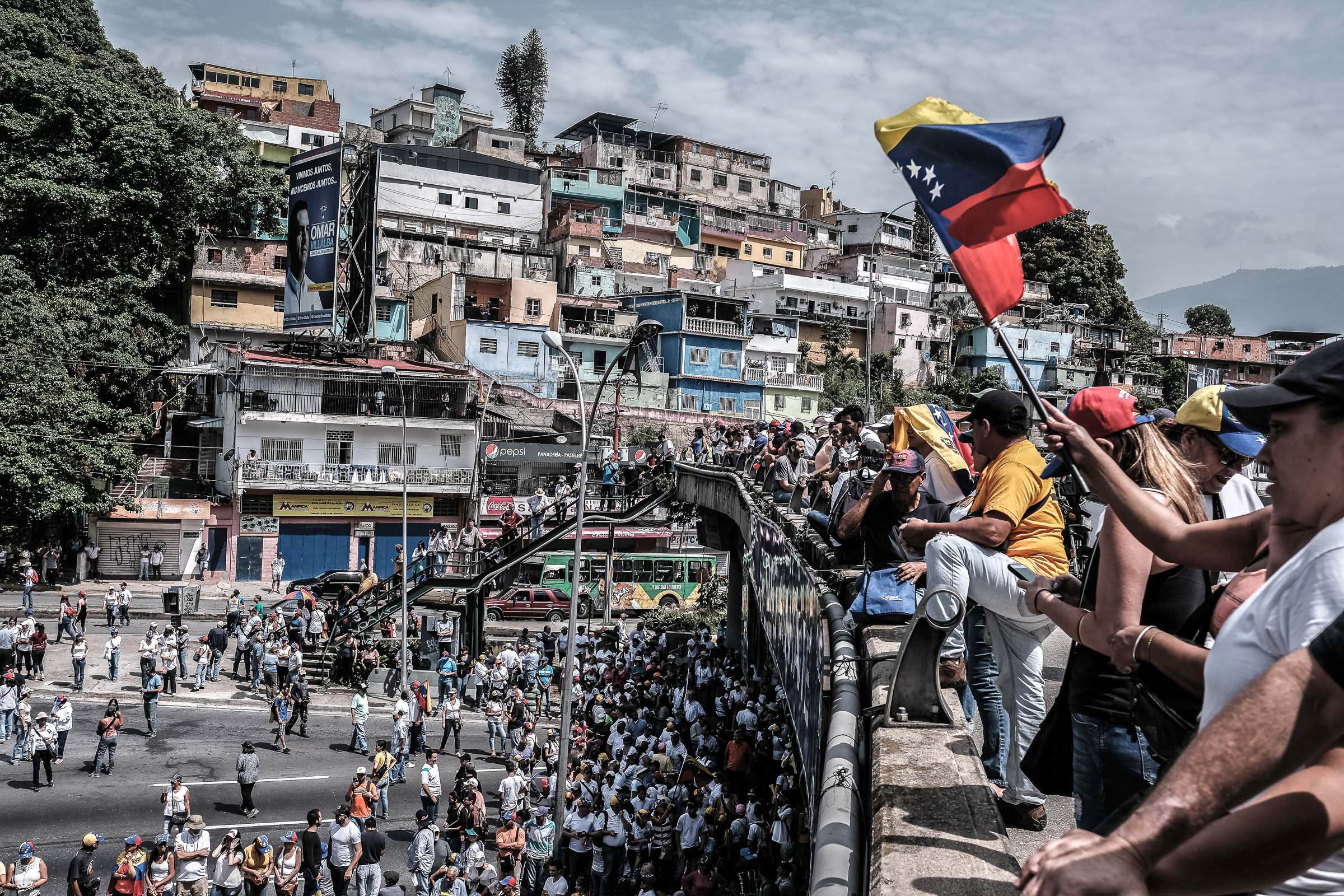
April 19, 2017 Caracas, Venezuela (Photo by Joris van Gennip/GroundTruth)
We went to Caracas on April 19, the 207th anniversary of the revolution that led to Venezuela’s independence from Spain. A protest, called the Mother of All Protests, erupted against the government of President Nicolás Maduro. Venezuelans had been protesting for four weeks amid governmental turmoil that included the Supreme Court’s decision to dissolve the opposition-led legislature, then reversing that decision under mounting pressure at home and abroad.
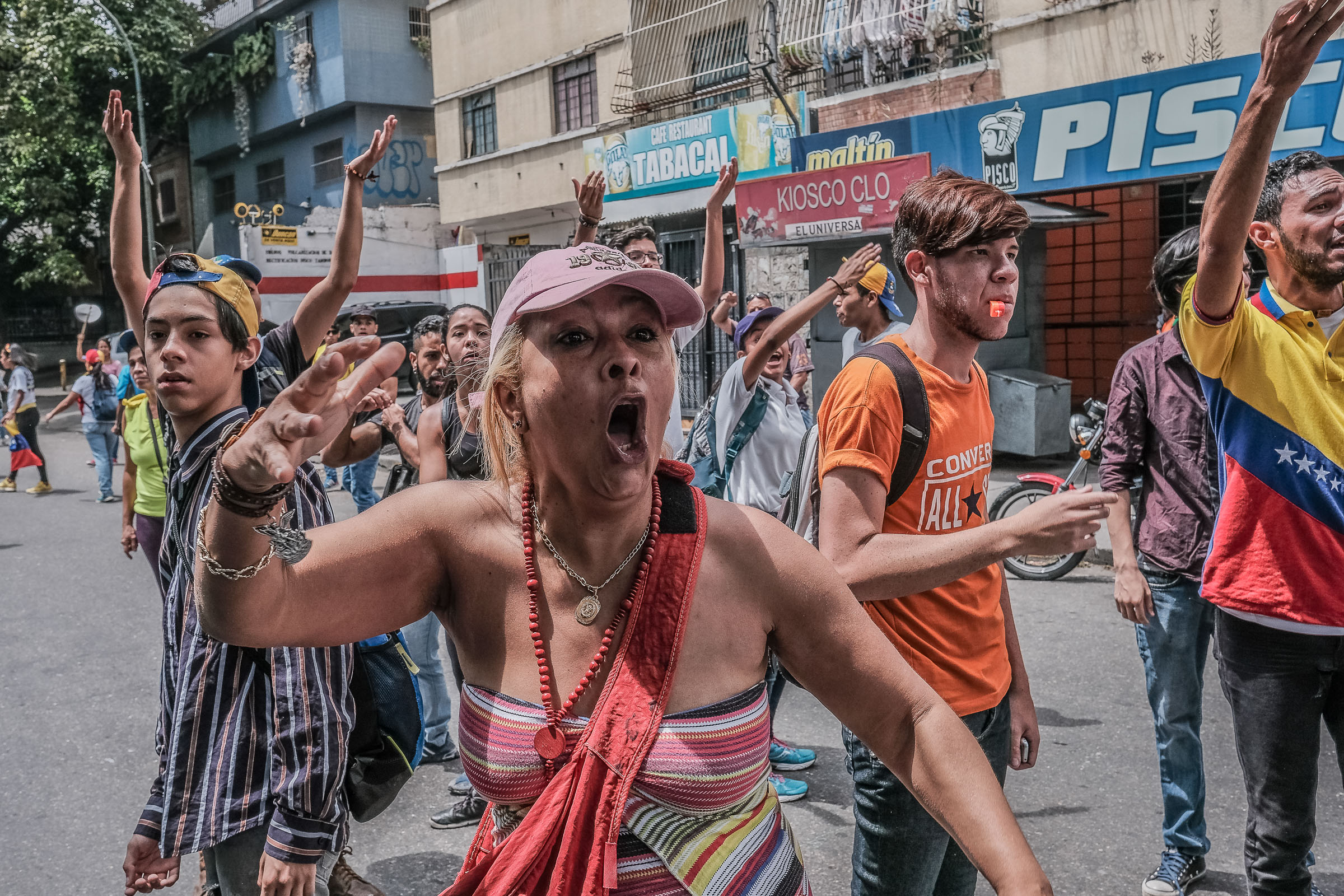
April 19, 2017 Caracas, Venezuela (Photo by Joris van Gennip/GroundTruth)
During the demonstration on April 19, a diverse group of people gathered on the streets of Caracas. The protest took place all over the city but was centered downtown where most of the political buildings are. This woman was shouting anti-Maduro phrases. These kinds of street protests have become the fabric of daily life in Venezuela.
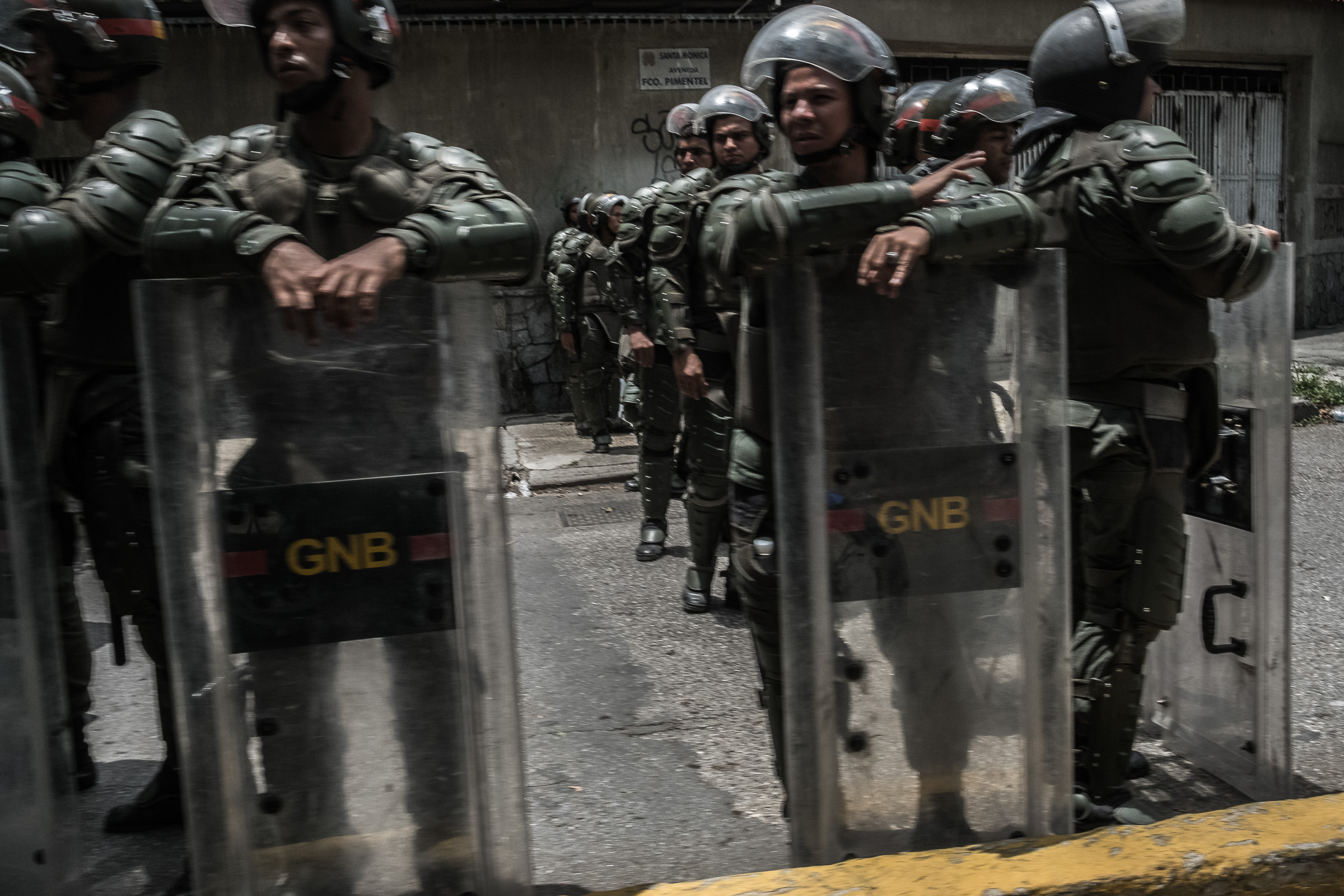
April 19, 2017 Caracas, Venezuela (Photo by Joris van Gennip/GroundTruth)
In the early afternoon, the military broke up the march using tear gas, rubber bullets and motorized police. Members of the National Guard are frequently deployed to quell the demonstrations. The riots in Venezuela were more violent than riots I’ve experienced elsewhere, like in Paris, France. At one point during the protests in Caracas, my group and I were on a bridge and on another bridge across from us were police. They were aiming at us with tear gas.
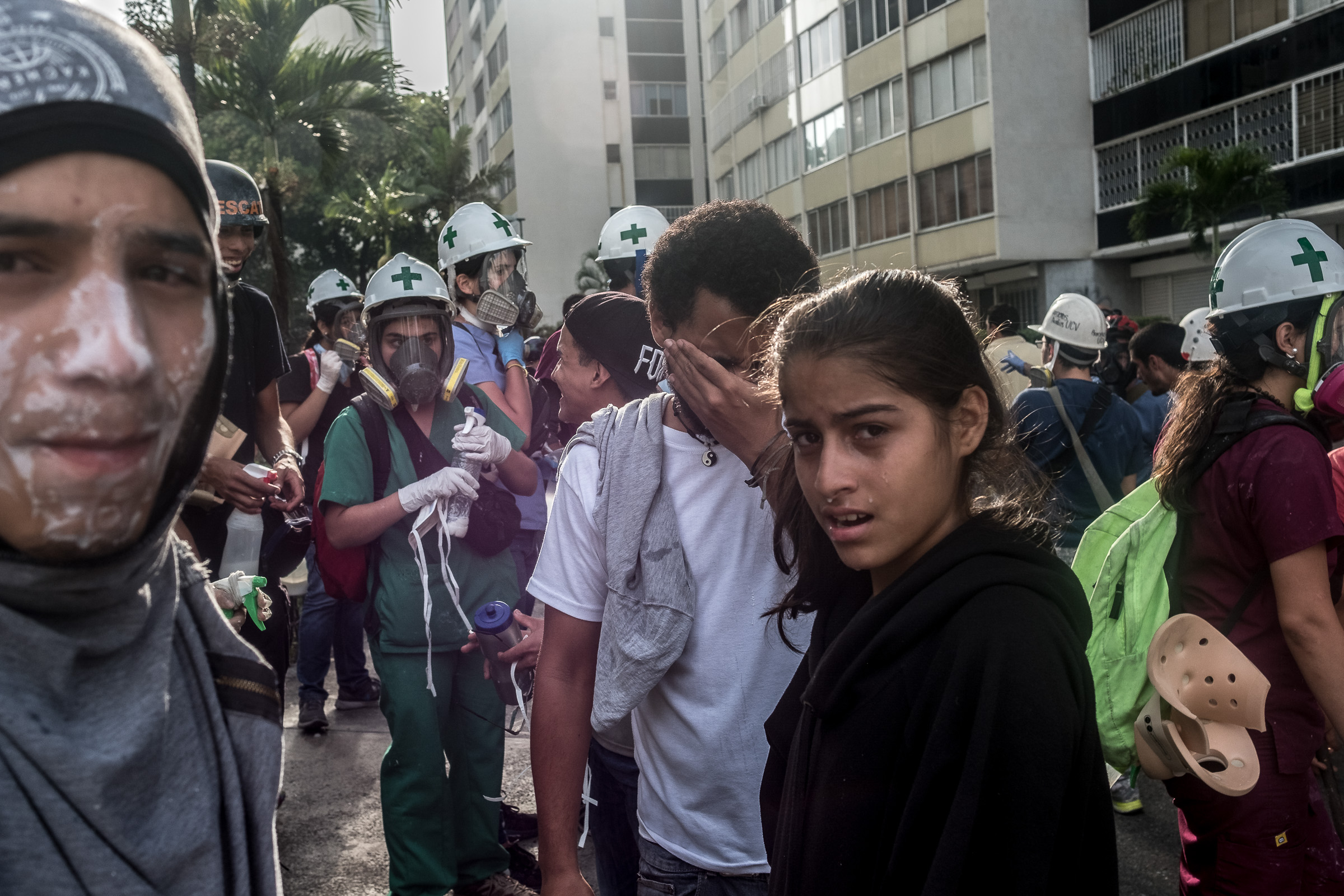
April 19, 2017 Caracas, Venezuela (Photo by Joris van Gennip/GroundTruth)
People of all ages protest, but the older generation is more peaceful. The people I saw getting hurt were younger. The police were in riot gear and were better armed, but throngs of young protesters would often swarm police vehicles and destroy them with rocks. Though the protesters were mostly armed with shields, swords, rocks and sometimes molotov cocktails, their main weapon was their numbers. Some of the protesters were only 16 or 17. These protesters in Caracas were recovering from tear gas after a demonstration. They were aided by the Green Cross, a volunteer group of physicians who were on hand to give medical assistance during protests.

April 19, 2017 Caracas, Venezuela (Photo by Joris van Gennip /GroundTruth)
Some protesters started looting an electronics store, during the April 19 protests. These teenagers ran with stolen TVs. Seconds after this picture was taken, counter-demonstrators confiscated and destroyed the stolen items.
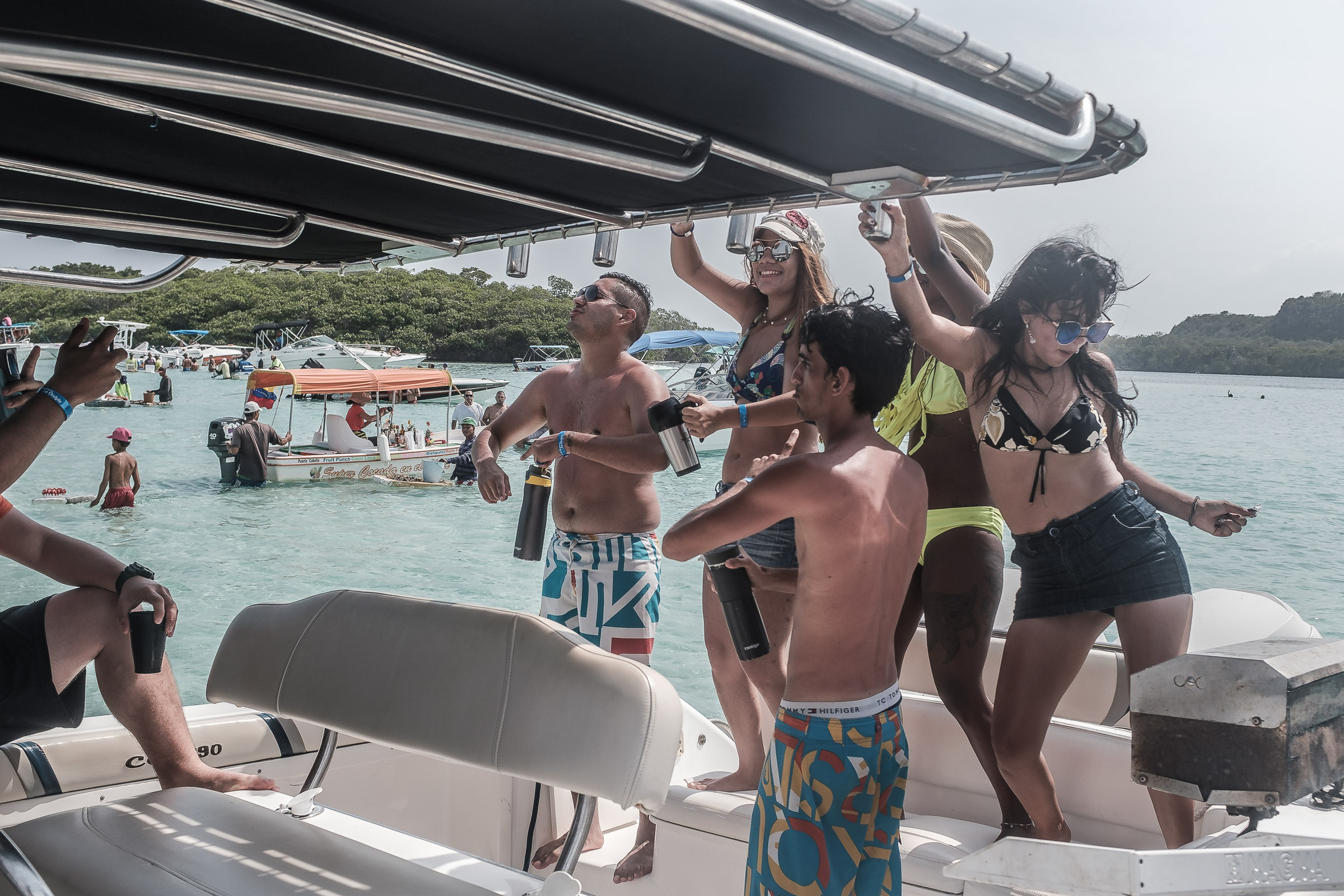
April 23, 2017 Morrocoy, Venezuela (Photo by Joris van Gennip /GroundTruth)
Morrocoy used to be a popular tourist destination. Though tourists from outside the country have stopped coming here, the location remains a coastal paradise for wealthy young Venezuelans. Though ships are occasionally stolen at gunpoint from the shipyard, crime rates are much lower here than elsewhere. I was surprised that so many wealthy people could be in one place and not get robbed. I think the reason might be that Morrocoy is secluded and therefore might have a natural barrier.
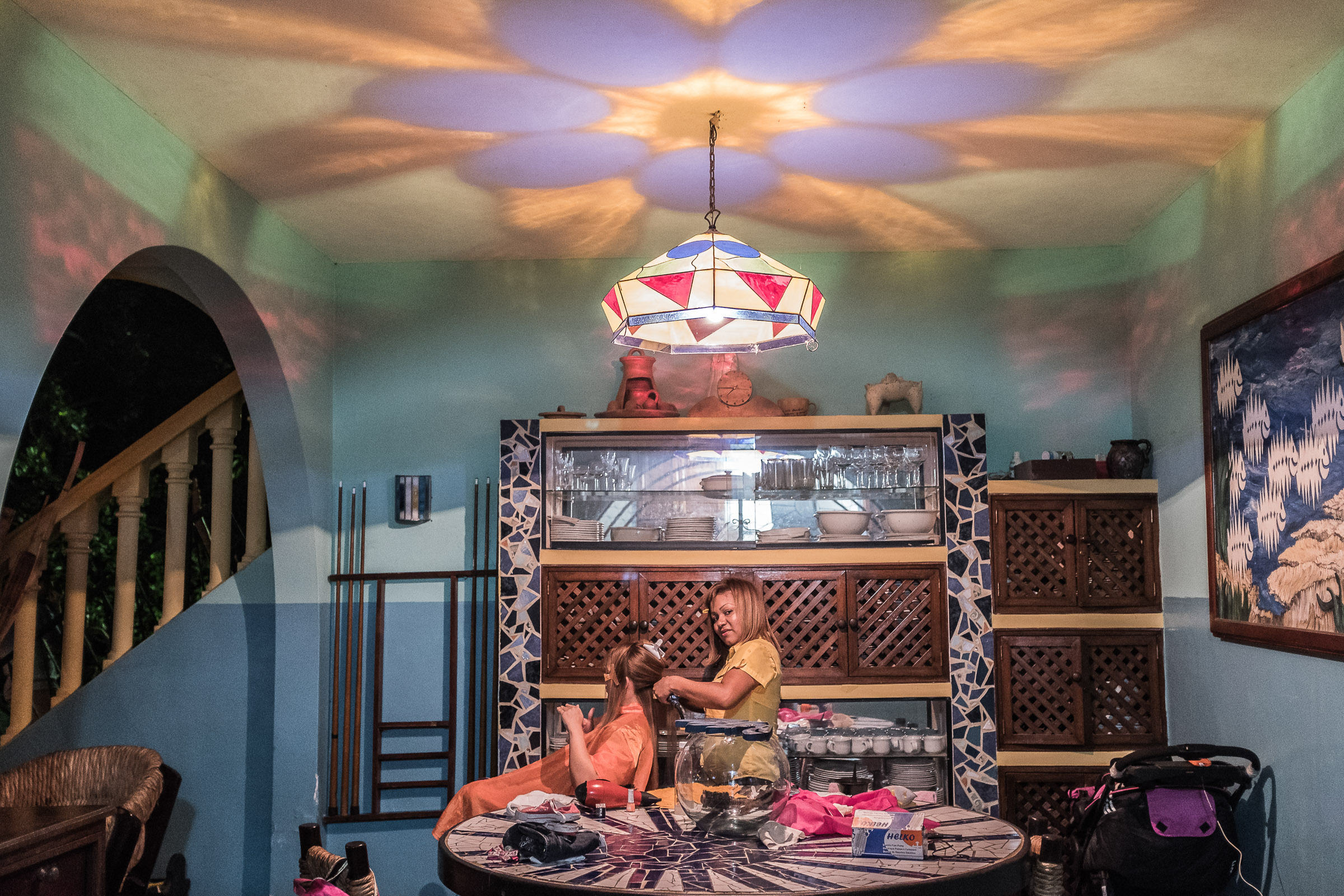
April 26, 2017 Maracay, Venezuela (Photo by Joris van Gennip /GroundTruth)
The daughter-in-law of a Dutch posada (hotel) owner, Bart, gets her hair done in the posada. She and her husband will take over running the posada when Bart goes back to Holland. Bart was worried, though. The posada owner said that just a couple of years ago, the hotel was full of tourists from all over the world who would come to bird watch. Now, although he keeps the hotel up to Western standards, no one from outside Venezuela ever comes to stay. They are too afraid. The hotel used to be lucrative, but now Bart is just barely able to keep it afloat. He worries that if the hotel goes under, he’ll leave nothing for his son and daughter-in-law.
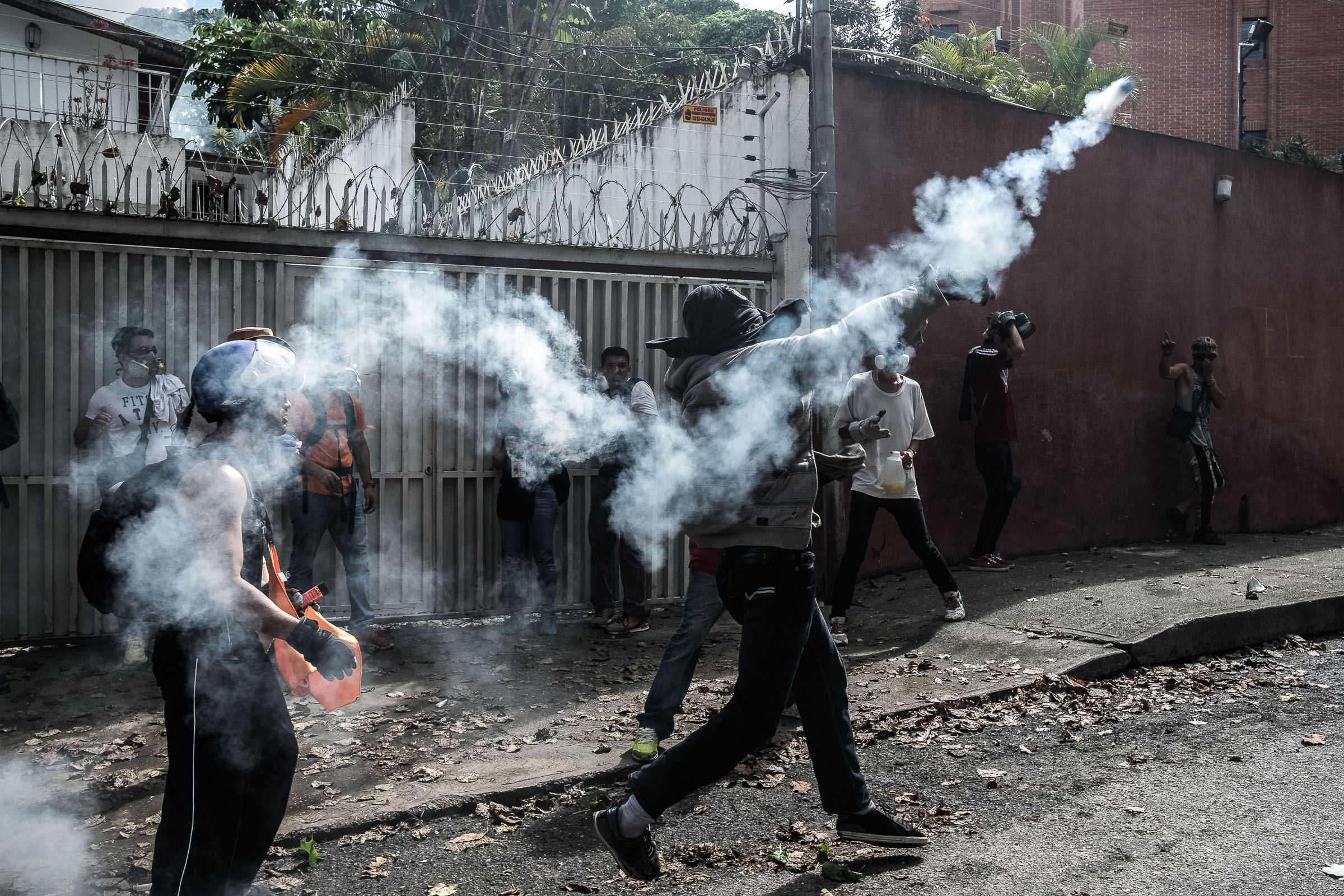
May 1, 2017 Caracas, Venezuela (Photo by Joris van Gennip/GroundTruth)
In Venezuela, protesters were violent. They fought back during the May Day protest in Caracas. The police and military don’t show up just to keep everything calm, as I witnessed in Paris. They and the protesters are actively fighting against each other. More than 40 protesters were killed during the demonstrations of recent weeks.
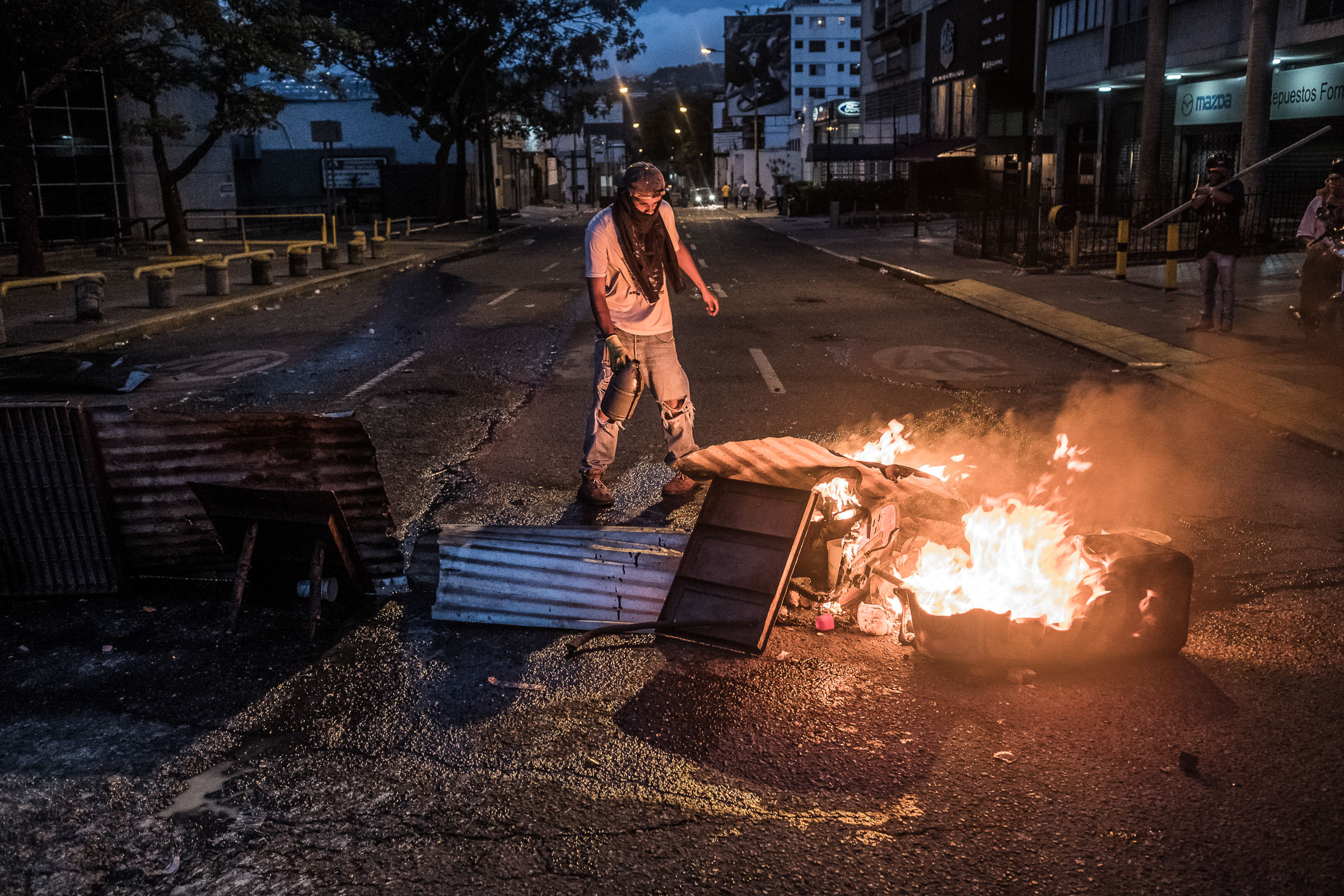
May 1, 2017 Caracas, Venezuela (Photo by Joris van Gennip/GroundTruth)
An anti-government protestor dosed a pile of debris with gasoline during the May Day demonstration.
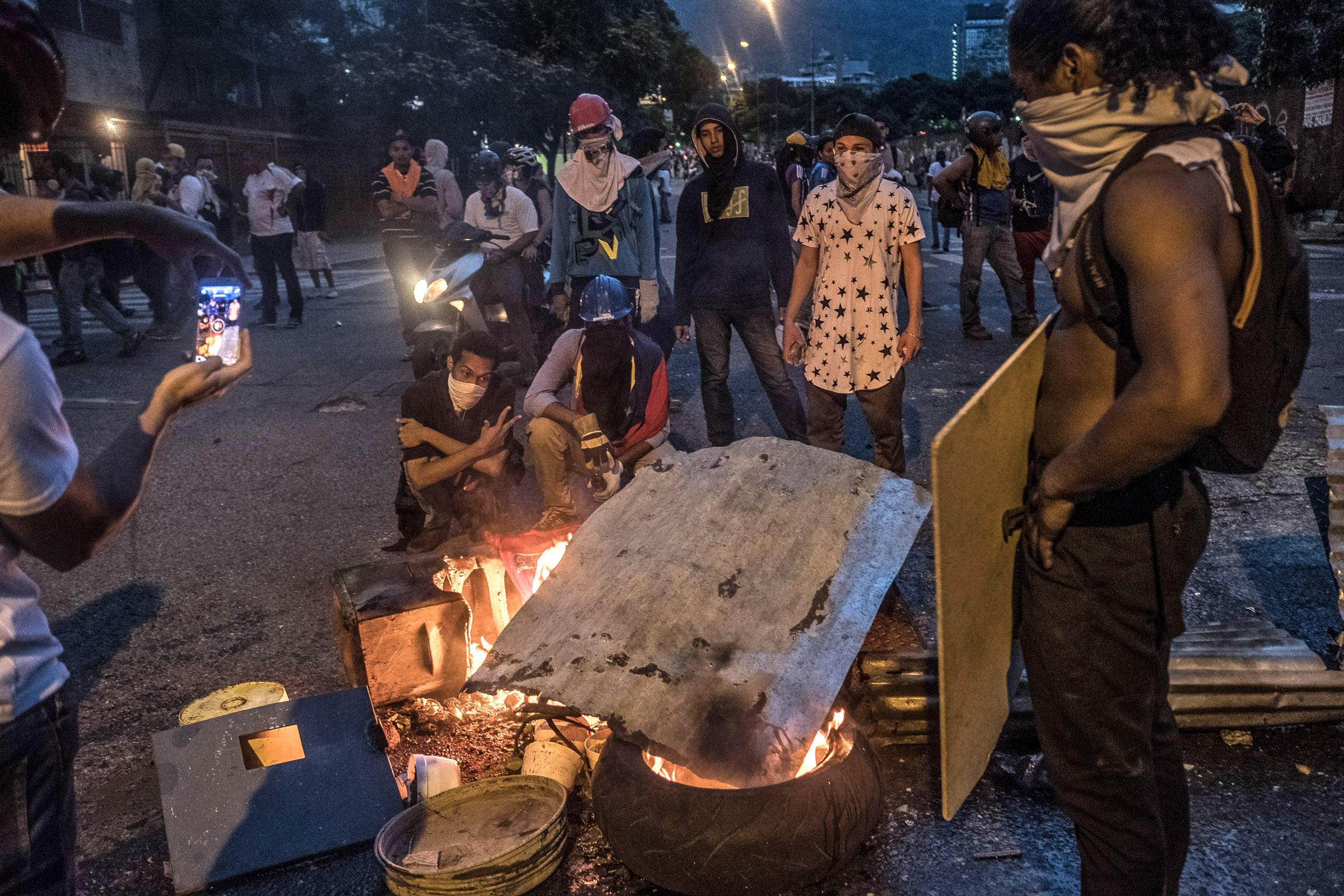
May 1, 2017 Caracas, Venezuela (Photo by Joris van Gennip/GroundTruth)
Riots broke out again in Caracas on May Day as President Maduro announced a new popular assembly that could make changes to the Constitution. The atmosphere after the May Day demonstrations and riots was tense. Protesters took pictures of each other, aware that social media is a very important tool for telling the opposition’s story to the world.

May 2, 2017 Maracay, Venezuela (Photo by Joris van Gennip/GroundTruth)
Axel, a linguistics student, lives with his family: his mother Glenda, a doctor; his father Rosevelt, a psychologist; and his brother Billy, a psychology student. Though the family was upper-middle class and highly educated, they still struggled to buy food because of the steep inflation. His mother has worked in a hospital for 20 years, but is only able to take her family out to dinner once in awhile. The cost of food in Venezuela is just so high.
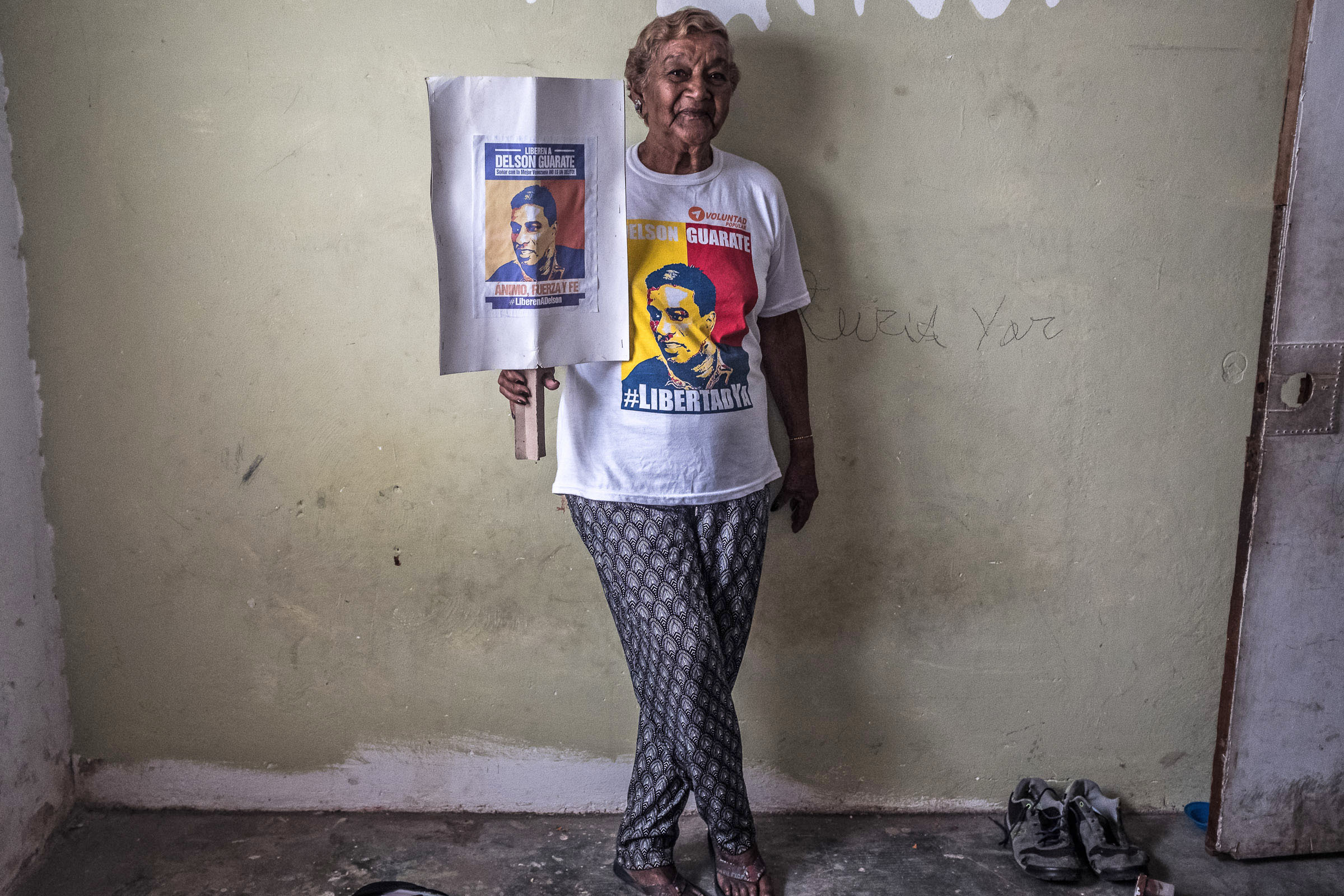
May 3, 2017 Maracay, Venezuela (Photo by Joris van Gennip/GroundTruth)
This 83-year-old was the mother of the opposition mayor of El Limon. Her son was arrested but she was not even sure who arrested him. All she knew was that the corrupt government took him. It could have been someone who wanted to be mayor, so they paid the police to arrest her son; it could have been anyone who wanted him out of the way. Everything is for sale in Venezuela. She had no idea when he would be released. She made signs and pamphlets and everyday she hit the streets, protesting her son’s arrest and the corruption in the country.
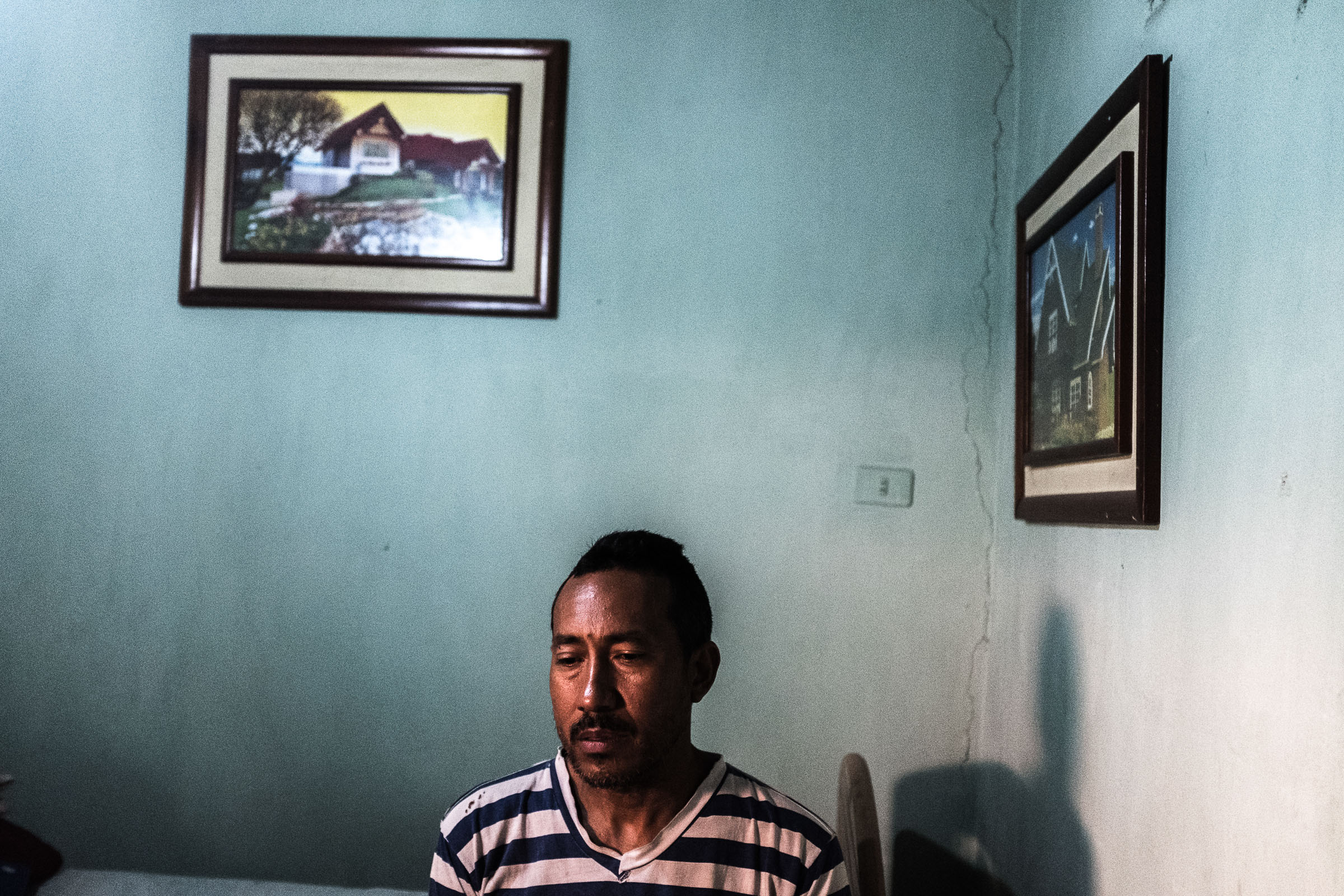
May 3, 2017 Maracay, Venezuela (Photo by Joris van Gennip/GroundTruth)
Cesar and his driver got caught in an illegal checkpoint 15 years ago. The checkpoint operators told them they had to give them money in order to pass. Cesar and his driver, not wanting to give money to such a system, refused to pay. His driver was shot dead and Cesar was shot in the leg. In the years since it happened, Cesar has tried to get the people who shot him and his driver arrested, but nothing ever happened. Because violence is so often unpunished, people can get away with setting up illegal checkpoints to extort money with impunity. Sometimes even the police set up illegal checkpoints.
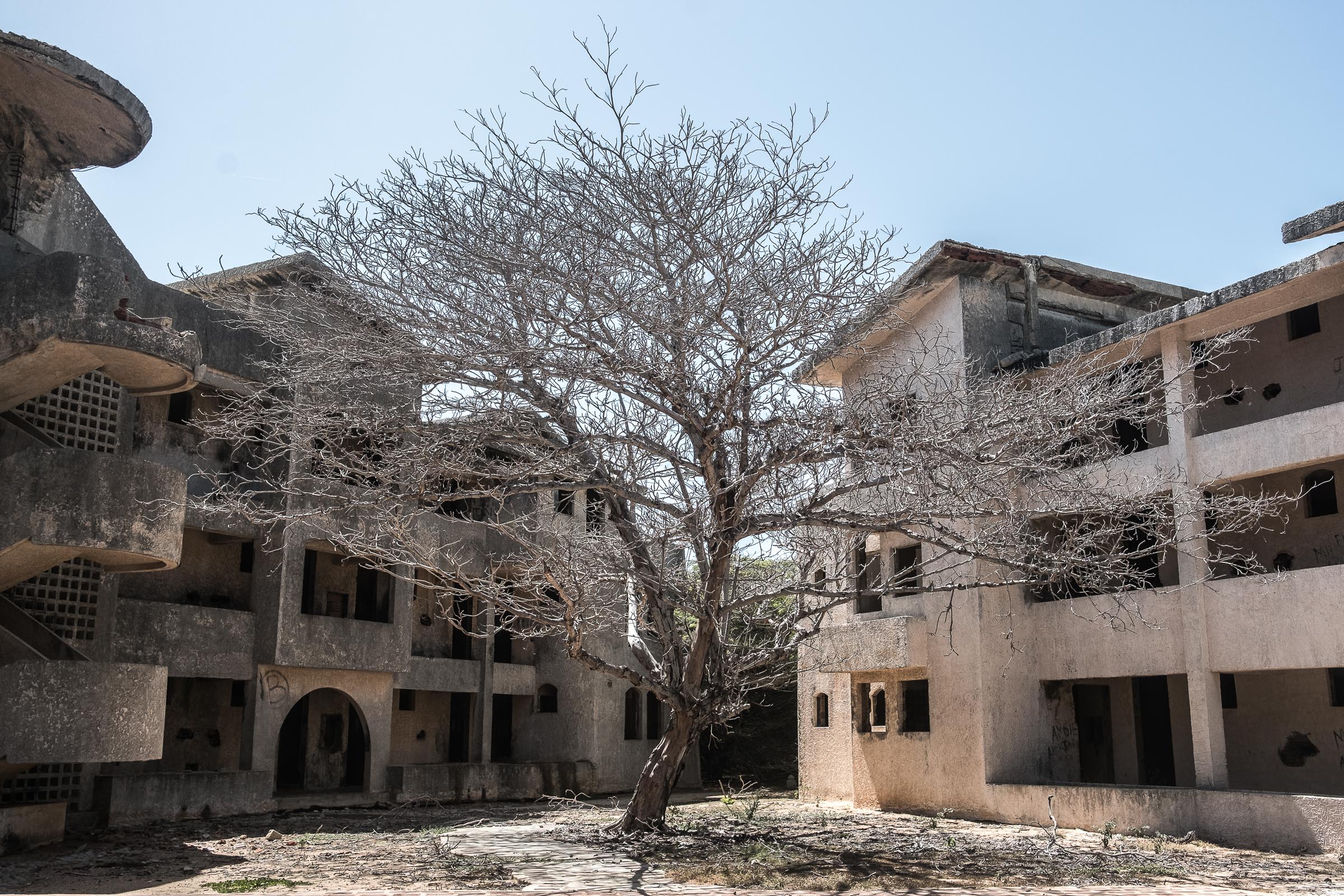
May 4, 2017 Punto Fijo (Photo by Joris van Gennip/GroundTruth)
This was once a great resort north of Punto Fijo, but was abandoned, emptied and ransacked. Many hotels were closed because of the collapse of the tourism industry in Venezuela.

May 6, 2017 San Cristobal, Venezuela (Photo by Joris van Gennip/GroundTruth)
Petrol in Venezuela costs next to nothing, but across the border in Colombia, it costs 40 times more. Petrol is so cheap in Venezuela that to fill up a tank costs only 100 Bolivar — a simple cheese sandwich costs 3,000 Bolivar. So, especially near the border, many people steal petrol. It’s illegal but very lucrative. This group of smugglers was a family. The patriarch of the family agreed to speak to me after Cheo drank a couple of cervezas with the family. He was very proud of the life he provided for his family. His kids go to school and he has a second house. In many ways, the family seemed like a totally normal, nice family. They offered me food and told me about their deal with the gas station owner: He must allow the family of smugglers to take 40 to 60 percent of his petrol or he dies. This day the family took 75 percent of the station’s fuel in just 4 or 5 hours. Riding motorcycles, they jump ahead of the line of cars waiting to fill their tanks, fill up the bikes’ tanks, then pull around the corner and siphon the fuel in the motorcycle tanks into barrels. We only spent about an hour with the family because we were worried — despite the family’s relative normalness, you never know who people are affiliated with. We didn’t want word getting back to any gangs that we’d been taking photos of the petrol smugglers.

May 7, 2017 San Cristobal, Venezuela (Photo by Joris van Gennip/GroundTruth)
Colombia is visible from the road through San Cristobal, which leads to the Colombian border. Many Venezuelans dream of a life in Colombia, a more stable country that is developing. When we crossed the border into Colombia, Colombians talked about Venezuela as though it were garbage. They saw Venezuela as a country full of sorrow. With instability not too far in Colombia’s past, many Colombians feared that Venezuelans could bring the violence and instability of their country across the border if they moved there.

































